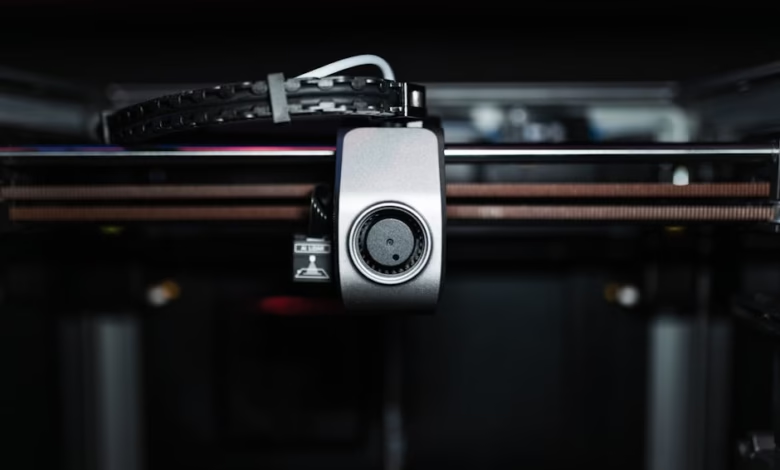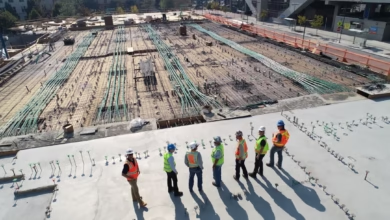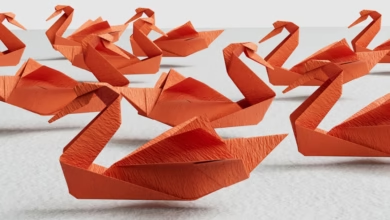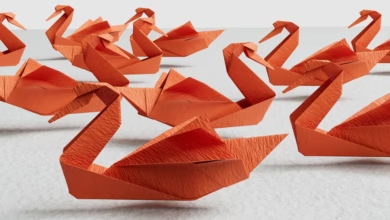Innovative Metal Fabrication: Key Processes and Future Trends in Sustainable Production and 3D Printing Technologies

Metal fabrication is a cornerstone of modern manufacturing, encompassing a variety of processes that transform raw materials into usable products. From welding and cutting to bending, these essential techniques allow industries to create everything from construction metals to aerospace components. This article delves into the significant processes of metal fabrication, focusing on their applications and importance in the manufacturing sector. Furthermore, we will explore the diverse range of metals used in fabrication, categorizing them into ferrous and non-ferrous metals, and examining their unique properties and applications. As the industry evolves, trends in sustainable metal production and advancements in 3D printing technologies are shaping the future of fabrication, paving the way for innovative practices in metal recycling and the use of rare earth metals. Join us as we uncover the intricacies of metallurgy, the significance of base metals like steel, aluminum, and copper, and the exciting possibilities that lie ahead in the world of metal fabrication.
- 1. Essential Metal Fabrication Processes: Welding, Cutting, and Bending in Modern Manufacturing
- 2. Exploring Metal Types: Ferrous and Non-Ferrous Metals in Fabrication and Their Applications
- 3. The Future of Metal Fabrication: Trends in Sustainable Production and 3D Printing Technologies
1. Essential Metal Fabrication Processes: Welding, Cutting, and Bending in Modern Manufacturing
Metal fabrication is a critical aspect of modern manufacturing, encompassing essential processes such as welding, cutting, and bending. These techniques facilitate the transformation of various metals into finished products used across diverse industries, including construction, aerospace, automotive, and jewelry.
Welding is one of the most vital metal fabrication processes. This technique involves joining two or more pieces of metal together by melting them at their edges and allowing them to fuse. Different welding methods, such as MIG (Metal Inert Gas) and TIG (Tungsten Inert Gas) welding, are employed depending on the type of metals used—be it ferrous metals like steel or non-ferrous metals like aluminum and copper. The ability to combine various metal alloys enhances the durability and performance of the final product, making welding indispensable in sectors like energy and automotive manufacturing.
Cutting is another fundamental process in metal fabrication. Techniques such as laser cutting, plasma cutting, and water jet cutting enable manufacturers to create precise shapes and components from sheets of metals, including base metals like zinc and precious metals like gold and platinum. This precision is crucial in industries where exact specifications are necessary for functionality and safety, particularly in aerospace and construction metals.
Bending completes the trio of essential metal fabrication processes. This technique involves deforming metal into desired shapes without breaking it. Bending is commonly used in the production of pipes and structural components, with metals such as steel and aluminum being prevalent due to their excellent workability and strength. The bending process allows for the creation of complex geometries, which are increasingly important in modern design and engineering.
As the demand for sustainable metal production continues to rise, the integration of metal recycling into these fabrication processes cannot be overlooked. By reusing industrial metals and precious metals, manufacturers can reduce waste and lower their environmental impact. Additionally, advancements in metallurgy and the rise of 3D printing metals are paving the way for innovative approaches to metal fabrication, further enhancing efficiency and sustainability.
In summary, welding, cutting, and bending are essential metal fabrication processes that play a significant role in modern manufacturing. As industries evolve and the focus on sustainability grows, the importance of these techniques in working with various metals—from rare earth metals to battery metals—will only increase, shaping the future of metal commodities and investment opportunities like gold and silver investing.
References:
– Author, A. (Year). Title. Publisher. URL
– Author, B. (Year). Title. Publisher. URL
– Author, C. (Year). Title. Publisher. URL
2. Exploring Metal Types: Ferrous and Non-Ferrous Metals in Fabrication and Their Applications
In the realm of metal fabrication, understanding the different types of metals is crucial for selecting the right material for specific applications. Metals are broadly categorized into ferrous and non-ferrous metals, each possessing unique properties and applications.
Ferrous metals, primarily composed of iron, are known for their strength and durability. Common examples include steel and cast iron. These industrial metals are widely employed in construction, automotive manufacturing, and machinery due to their excellent mechanical properties and affordability. However, ferrous metals are prone to metal corrosion, which can be mitigated through various protective coatings or alloying with other materials.
On the other hand, non-ferrous metals do not contain significant amounts of iron, making them resistant to rust and corrosion. This category includes valuable precious metals such as gold and platinum, as well as base metals like aluminum, copper, and zinc. Non-ferrous metals play a vital role in industries such as aerospace, where lightweight materials are essential for efficiency and performance, and in electronics, where conductivity is paramount. Additionally, rare earth metals and battery metals like lithium are increasingly important in today's technology-driven world, particularly in energy storage solutions and electric vehicles.
The applications of both ferrous and non-ferrous metals extend beyond traditional uses. For instance, metal alloys that combine different properties of various metals can lead to innovations in metal fabrication. The rise of 3D printing metals has opened new avenues for creating complex structures that were previously impossible with conventional methods. Sustainable metal production is also becoming a pressing concern, leading to increased interest in metal recycling practices that recover valuable materials while minimizing environmental impact.
As we explore the trends in metallurgy, it is crucial to consider how metal mining practices influence the availability of these metals. The fluctuating prices of metal commodities can affect investments in gold and silver, as well as the broader market for industrial metals. Understanding these dynamics is essential for both manufacturers and investors in the metal industry.
In conclusion, the choice between ferrous and non-ferrous metals in fabrication depends on the specific requirements of the application, including strength, weight, corrosion resistance, and cost. By keeping abreast of the latest developments in metal trends and sustainable practices, industries can make informed decisions that enhance their manufacturing processes and product offerings.
3. The Future of Metal Fabrication: Trends in Sustainable Production and 3D Printing Technologies
As the landscape of metal fabrication evolves, the future is increasingly leaning towards sustainable production and innovative technologies like 3D printing. The push for sustainable metal production is driven by the need to minimize environmental impact and reduce the carbon footprint associated with metal mining and processing. This trend is particularly relevant for industrial metals, such as steel, aluminum, copper, and zinc, which are widely used across various sectors, including construction, automotive, and aerospace.
One significant aspect of sustainable metal production is metal recycling. The process of recycling ferrous and non-ferrous metals not only conserves natural resources but also reduces energy consumption compared to traditional mining methods. Additionally, the recycling of precious metals, such as gold and platinum, is becoming increasingly important as the demand for these materials in electronics and jewelry continues to grow. Metal alloys, which combine base metals with other elements to enhance properties, are also being developed with sustainability in mind, focusing on reducing waste and increasing the lifecycle of materials.
In parallel, 3D printing technologies are revolutionizing the metal fabrication industry. This method allows for the precise layering of metals, including rare earth metals and refractory metals, to create complex structures that were previously impossible or cost-prohibitive to manufacture. The ability to produce components using 3D printing metals significantly reduces material waste and enables the customization of parts for specific applications, paving the way for innovation in sectors such as aerospace and energy. Moreover, advancements in battery metals like lithium and cobalt are being integrated into 3D printing processes, enhancing the manufacturing of energy-efficient components.
As the industry continues to adapt to these trends, the focus on sustainable practices and cutting-edge technologies will shape the future of metal fabrication. By prioritizing eco-friendly methods and embracing innovations like 3D printing, manufacturers can enhance their competitiveness while contributing to a more sustainable economy. The integration of these trends is essential for meeting the demands of a rapidly changing market, where metal commodities and their applications are constantly evolving.
In conclusion, metal fabrication plays a pivotal role in modern manufacturing, encompassing essential processes such as welding, cutting, and bending. Understanding the distinct characteristics and applications of ferrous and non-ferrous metals is crucial for industries ranging from construction to aerospace. As we look toward the future, trends such as sustainable metal production and advancements in 3D printing technologies are reshaping the landscape of metallurgy. The integration of metal recycling practices not only conserves resources but also contributes to the circular economy by reusing valuable materials, including precious metals like gold and platinum, and base metals such as steel, aluminum, copper, and zinc.
Investors and manufacturers alike should remain aware of the evolving demands for rare earth metals and battery metals, which are becoming increasingly significant in the energy sector. Understanding these metal trends is essential for making informed decisions in gold and silver investing, as well as navigating the complexities of metal commodities. As the industry continues to innovate, the combination of efficient fabrication techniques and eco-friendly practices will ensure that metal production remains at the forefront of technological advancement, meeting the needs of diverse sectors while safeguarding our planet for future generations.





